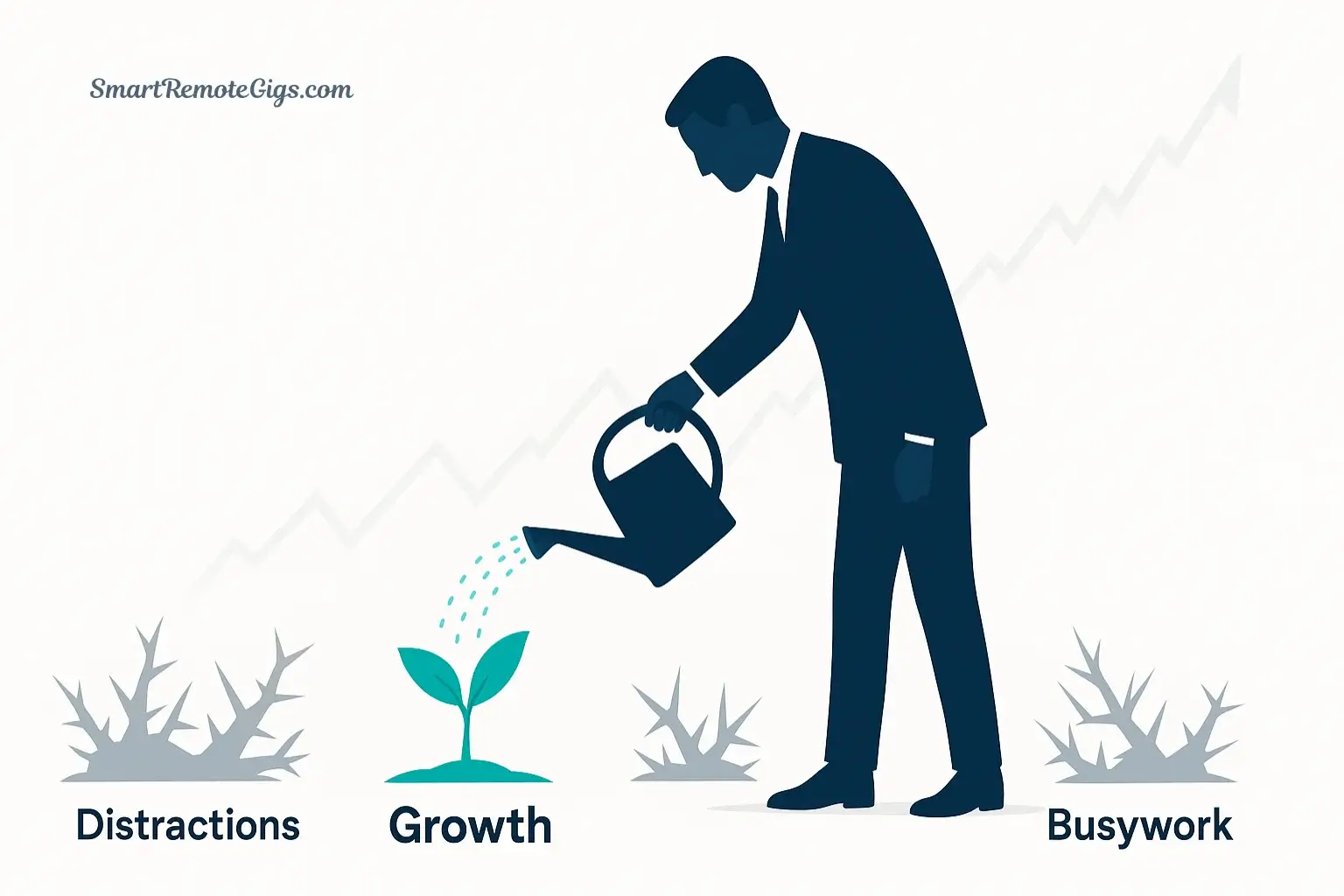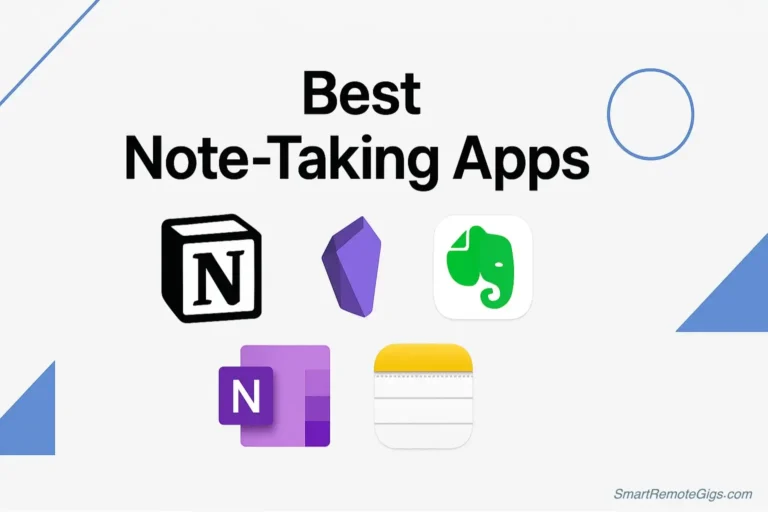You have eighteen months of runway. Your product needs critical improvements. Your biggest customer is threatening to churn. You need to hire two engineers. A VC wants to meet next week. Your co-founder needs to talk about equity. And somewhere in the pile of urgent demands, there’s the one conversation with a potential customer that could change everything—if you could just find time for it.
This is the founder’s dilemma: drowning in tasks that all feel urgent, knowing that only a handful actually matter, but lacking a framework to tell them apart. You’re working 80-hour weeks, yet the business isn’t growing at the rate it needs to. You’re busy, but you’re not building.
The Eisenhower Matrix for founders isn’t just another productivity hack—it’s a strategic framework for startup survival. It helps you distinguish between the work that keeps the lights on and the work that actually extends your runway. Between firefighting and building. Between motion and progress.
This guide will show you how to apply this decision-making tool to the chaos of startup life, with examples that reflect the real trade-offs you face every day.
A Quick Refresher: What is the Eisenhower Matrix?
The Eisenhower Matrix is a prioritization framework that categorizes work based on two dimensions: urgency (time-sensitivity) and importance (strategic impact). It creates four quadrants that help you decide what to do now, what to schedule, what to delegate, and what to eliminate.
The fundamental insight: urgency and importance are not the same thing. The work that screams loudest—emails, interruptions, “quick” requests—is rarely the work that moves your business forward. For a complete breakdown of the framework, including downloadable templates and detailed strategies, read our Ultimate Guide to the Eisenhower Matrix.
The Founder’s Matrix: Translating Quadrants into Company Milestones
Understanding the theory is easy. Applying it when everything feels both urgent and important—when you’re simultaneously CEO, product manager, head of sales, and janitor—requires seeing concrete examples from the founder’s perspective.
Quadrant 1: Do (Survival Mode)
These are genuine emergencies that threaten the company’s immediate survival or ability to operate. They demand your personal attention right now. Ignore them, and the business could fail or suffer irreparable damage.
Examples:
- Critical product bug affecting all paying customers
- Closing payroll when the account is about to run dry
- Server outage causing complete service downtime
- Responding to a key investor’s time-sensitive question during due diligence
- Handling a PR crisis or public security breach
- Signing legal documents with imminent deadlines
- Rescuing a deal with your largest customer who’s threatening to leave today
- Addressing a co-founder conflict that’s paralyzing the team
- Managing a cash flow emergency that affects operations
Founder Reality Check: True Quadrant 1 situations are less common than they feel. When everything is a fire, nothing is. If you’re constantly in survival mode, you’re not leading a startup—you’re riding a chaos machine. Chronic Q1 living is a symptom of neglected Q2 planning.
The goal isn’t to eliminate emergencies—they’re inevitable in startup life—but to build enough Q2 systems, relationships, and planning that Q1 crises become rare exceptions, not your daily reality.
Quadrant 2: Schedule (Growth & Strategy Mode)

This is where companies are built. These activities don’t scream for attention, don’t have tomorrow’s deadline, and often feel like they can be postponed “just one more week.” But they’re the high-leverage work that compounds over time and determines whether your startup succeeds or stagnates.
Examples:
- Having deep conversations with customers to understand their problems
- Developing your product roadmap and strategic vision
- Recruiting and hiring A-player talent before you desperately need them
- Building relationships with potential investors before you need to fundraise
- Creating scalable systems and processes before they break
- Learning skills critical to your role (sales, management, technical)
- Strategic partnerships that take months to develop
- Content marketing and brand building
- Preventive technical architecture improvements
- Team building and culture development
- Financial planning and scenario modeling
- Thinking time—actual strategic reflection without interruption
Founder Reality Check: This is the quadrant where founders fail most dramatically. These activities never feel urgent until it’s too late. You postpone customer conversations until growth stalls. You delay hiring until you’re drowning. You skip strategic planning until you’ve wasted six months going the wrong direction.
Startup prioritization comes down to this: protect time for Quadrant 2 like your company depends on it—because it does. The founders who scale successfully treat Q2 time as sacred. They time-block it, defend it fiercely, and recognize that saying no to interruptions is saying yes to growth.
Quadrant 3: Delegate (Leverage & Empowerment Mode)
These tasks feel urgent—someone needs something now—but they don’t require your unique skills as founder or CEO. They’re often operational tasks that feel important because they’re visible or because someone is applying pressure, but they don’t move strategic needles.
Examples:
- Scheduling meetings and managing calendars
- Initial screening of job candidates (let your team do first rounds)
- Responding to every customer support ticket personally
- Managing company social media posts
- Creating internal status reports and presentations
- Attending every single team meeting
- Handling routine vendor negotiations
- Writing first drafts of documentation
- Coordinating logistics for company events
- Researching tools and solutions (delegate the research, make the decision)
- Processing expenses and administrative tasks
How to Delegate Effectively:
- Hire to delegate: Your first hires should take Q3 tasks off your plate, not just add to your workload
- Build systems: Create templates, processes, and documentation so tasks can be delegated without constant oversight
- Empower, don’t micromanage: Give context and authority, then trust your team
- Protect your leverage: Every hour you spend on Q3 is an hour stolen from Q2 growth work
Founder Reality Check: Many founders resist delegating because “it’s faster to do it myself” or “nobody can do it as well as I can.” Both statements are true in the short term and catastrophic in the long term. Your job isn’t to do everything well—it’s to ensure the right things get done while you focus on founder time management for high-leverage activities only you can do.
If you’re a solo founder or pre-revenue, delegation might mean automation, contractors, or simply saying no more often. The principle remains: your time is the scarcest resource in the company.
Quadrant 4: Delete (Distraction & Stagnation Mode)
These activities provide neither strategic value nor time-sensitive necessity. They’re often the result of saying yes by default, confusing motion with progress, or avoiding harder Q2 work. They feel productive in the moment but contribute nothing to company growth or survival.
Examples:
- Chasing low-probability partnerships that excite you but don’t fit the strategy
- Perfectionism on internal presentations or documents
- Attending networking events with no clear business development goal
- Excessive time tweaking your website design instead of talking to customers
- Reading every article about startup best practices instead of executing
- Participating in online debates or social media arguments
- Adding features nobody asked for because they’re technically interesting
- Pursuing press coverage that doesn’t reach your target customer
- Reorganizing internal tools and processes that already work
- Joining advisory boards or commitments that don’t advance your goals
- Analysis paralysis—endless research instead of testing and learning
Founder Reality Check: Quadrant 4 is often where founders hide from the uncomfortable Q2 work of selling, recruiting, or having hard conversations. It’s procrastination dressed up as productivity. The CEO decision matrix requires ruthless elimination of these activities.
Ask yourself: “If we simply stopped doing this, what would break?” If the answer is “nothing,” stop doing it immediately.
The Founder’s Trap: Why You’re Stuck in Quadrants 1 and 3
Here’s the painful truth: most struggling founders spend 80% of their time in Quadrants 1 and 3, wondering why their company isn’t growing.
The Adrenaline of Quadrant 1
There’s an adrenaline rush to firefighting. Solving urgent problems provides immediate feedback and a sense of accomplishment. Your brain rewards you with dopamine when you “save the day.” But constant crisis management is a symptom of poor Q2 planning, not heroic leadership.
The Illusion of Quadrant 3
Being responsive feels like good leadership. Answering every Slack message immediately, attending every meeting, reviewing every decision—it all feels necessary. But responsiveness isn’t leadership. You’re not building a company; you’re becoming a highly paid administrative assistant to your own startup.
Meanwhile, Quadrant 2—talking to customers, hiring great people, building strategy—gets perpetually postponed because “there’s no time.” But that’s backwards. You don’t find time for Q2; you make time by saying no to Q1 and Q3 work that doesn’t require you.
The Breakthrough Question: Before saying yes to any task, ask yourself: “Is this the highest-leverage use of my time right now, or am I avoiding something harder?” Usually, you’re avoiding Q2 work because it’s uncomfortable, ambiguous, or has uncertain payoff.
Using the Matrix for Strategic Leadership

The matrix becomes even more powerful when you use it not just for personal productivity but as a communication and alignment tool across your entire organization.
Aligning Your Team

Share the framework with your team and use it to explain your priorities. When you turn down a meeting or defer a feature request, you can say: “This is important work, but it’s Quadrant 2. We’re scheduling it for next sprint because right now we need to focus on this Quadrant 1 customer issue.”
This transforms what could feel like arbitrary decisions into a shared mental model. Your team understands the trade-offs you’re making and can start applying the same framework to their own work.
During all-hands or team meetings, explicitly discuss what’s in each quadrant this week. It creates transparency about priorities and helps everyone understand why certain things aren’t getting done—not because they’re not valuable, but because they’re less important than the alternatives.
Managing Your Board & Investors

Frame your board updates using the quadrants. Show that you’re not just busy—you’re strategically focused:
- “This quarter we handled these Q1 crises [demonstrate competence]…”
- “But we invested most of our time in these Q2 strategic initiatives [demonstrate vision]…”
- “We delegated these Q3 activities to empower the team [demonstrate leverage]…”
- “And we eliminated these Q4 distractions [demonstrate discipline]…”
This communication style demonstrates mature leadership. You’re not just reacting to whatever comes up; you’re making intentional choices about resource allocation. Investors bet on founders who understand how to focus on growth amidst chaos.
Many founders also wear the product manager hat in early-stage companies. For deeper insights on applying prioritization frameworks to product development specifically, see our guide on the Eisenhower Matrix for project managers.
Conclusion: You Are the Chief Prioritization Officer
Every founder has the same 168 hours per week. The difference between those who scale successfully and those who burn out without traction comes down to one thing: how they allocate those hours.
Your most important job isn’t coding, selling, or networking. It’s deciding what not to do. Every yes to a Quadrant 3 or Quadrant 4 activity is an implicit no to Quadrant 2 growth work. Every hour spent firefighting Quadrant 1 crises is an hour you didn’t invest in Quadrant 2 systems that would prevent those crises.
The Eisenhower Matrix for founders gives you a decision-making framework that cuts through the noise. It helps you distinguish between:
- Building vs. firefighting
- Motion vs. progress
- Feeling busy vs. creating value
- Working in the business vs. working on the business
You’ll still face emergencies. You’ll still have days that feel chaotic. But the difference is intentionality. You’ll know when you’re reacting versus when you’re building. You’ll protect time for the high-leverage Q2 work that compounds over time. And you’ll have the language to say no to everything else.
Your startup doesn’t need you to work harder. It needs you to work on the right things. The things that extend runway, attract customers, and build a sustainable company.
Use this framework to make your next big decision. Look at your calendar for next week. What percentage of your time is allocated to Quadrant 2 growth activities? If it’s less than 50%, something needs to change.
Ready to dive deeper? Check out our Ultimate Guide to the Eisenhower Matrix for downloadable templates and advanced strategies. For additional founder wisdom on prioritization and strategic thinking, explore Paul Graham’s essays on Startups in 13 Sentences and Maker’s Schedule, Manager’s Schedule.






